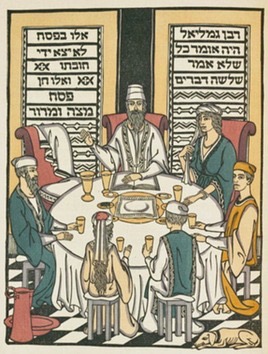
Art of the Past for Jews of Today
It is difficult to conceive of a ritual moment more central to the Jewish experience as a whole than the Seder experience. And it is impossible to conceive of the Seder without the haggadah. But the illustrations of the haggadah tend to be taken for granted— they are the icing on the cake, as it were—mere decoration.
However, Jews over the centuries invested huge amounts of time and money upon the creation of beautiful haggadot, and have lavished much attention on their decoration. The illustrations of the haggadah are meaningful commentary in and of themselves on the events of the Exodus. And the medieval illustrations of some of the most lovely of these books deceive us with their quaint, old-fashioned appearance. In fact, they speak of political dilemmas, they weep over sorrows and smile in triumph, they ask pointed questions—what does it mean to be a Jew in a world that is open, progressive, pluralist (yes, I am describing the Middle Ages)? How am I to treat my neighbor, simultaneously my friend and possibly my enemy? And is God as hidden from us now as during the Exodus, when it took 280 years of slavery for the cry of the Israelites to reach the Divine Throne?
The illustrations of the medieval haggadah—if we understand how to view them— speak volumes to the post-modern audience, in a language at once of great antiquity, and as near to us as our own heartbeats.